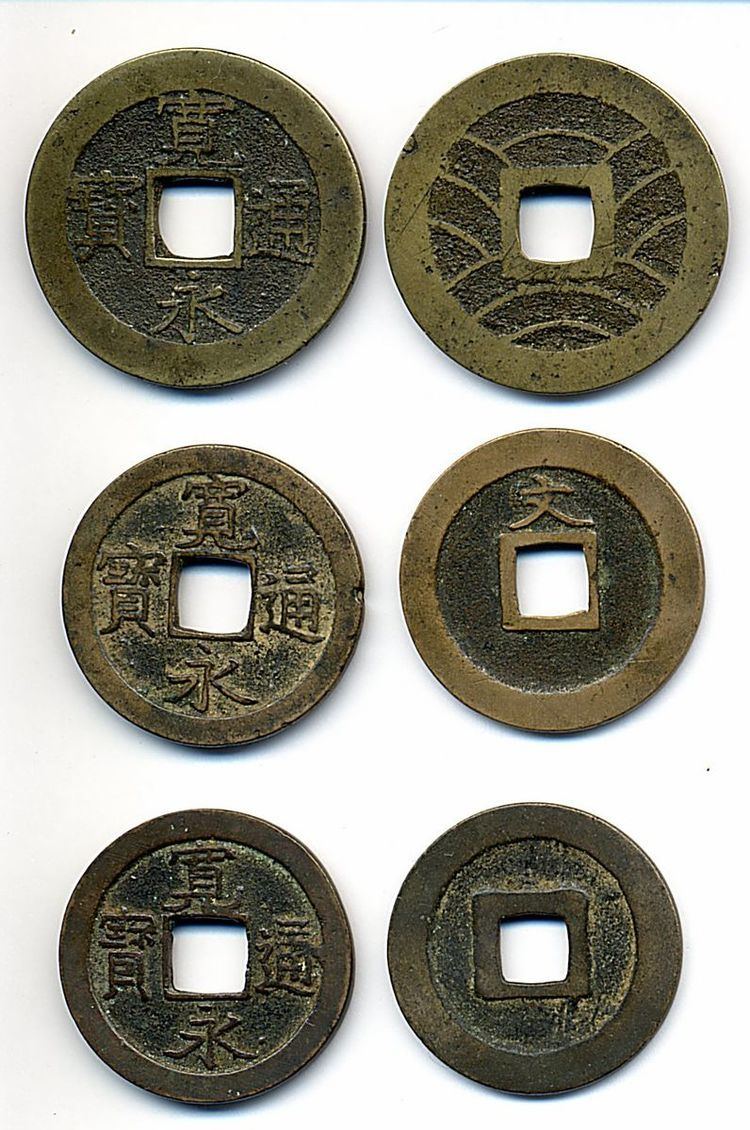 | ||
The mon (文) was the currency of Japan from the Muromachi period in 1336, until 1870. It co-circulated with the new sen until 1891. The Kanji for mon is 文 and the character for currency was widely used in the Chinese-character cultural sphere, e.g. Chinese wen Korean mun. Coins denominated in mon were cast in copper or iron and circulated alongside silver and gold ingots denominated in shu, bu and ryō, with 4000 mon = 16 shu = 4 bu = 1 ryo. In 1869, due to depriciation against gold, the new fixing officially was set for 1 ryo/yen = equal to 10.000 mon. The yen started to replace the old duodecimal denominations in 1870: in 3rd quarter of 1870, the first new coins appeared, namely 5, 10, 50 sen silver and 2,5,10,20 Yen. Smaller sen coins did not appear before spring, 1873. So the mon coins (1, 4, 100, 250 mon etc.) remained a necessity for ordinary peoples commodities and allowed to circulate until 1891.12.31. Only from Jan. 1, 1954 onward the mon became invalid: postwar inflation had removed sen, mon etc. denominations smaller than 1 Yen. Due to the missing small coinage, the Japanese posts e.g. issued their first stamps (Meiji 4.3.1/1871.4.20) in mon and fixed postal rates in mon until April, 1872 (Meiji 5.2.28).
During the co-existence with the sen (1870/91), the metal content of the old currency became important. Official exchange for coins from 1871.6.27: 4 mon copper = 2 rin, 1 mon bronze = 1 rin (1 rin = 1/10th of a sen). So "a mon was not a mon", but its metal kind counted after switchover to decimal sen: bronze was better than copper. There were no "rin" coins before 1873, it was just accounting unit (10 rin = 1 sen). By the way, the most current coin, the "Tempo" (天保, or 100 mon) was accounted merely with 8 rin (0.8 sen) in that sen period.
History
Mon coins were holed, allowing them to be strung together on a piece of string. In the Edo-period of Japan (1615-1868), stringed-together coins received a small discount when presented like this. E.g. for 100 Mon payment: if those 1 Mon coins were all tied in a row, discount given was 4 mon, so 96 stringed coins of 1 mon were accepted at par with 100 mon. Similar discounts existed probably for other bulk payments with small coinage in stringed form.
Through Japanese history, there were many different styles of currency of many shapes, styles, designs, sizes and materials, including gold, silver, bronze, etc.
